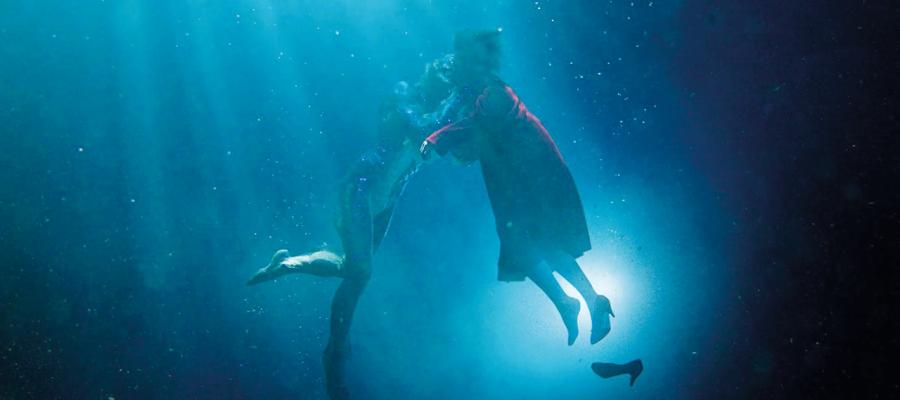The Indispensable Emotions
Jul 26, 2005Where would we be without emotions? Many philosophers throughout history have thought the emotions serve only to cloud our judgments and actions.

What is loneliness?
Loneliness isn't written about much by analytic philosophers. Solipsism is, of course—whether it's possible for us to have knowledge of the mind of others or indeed of anything outside of our individual minds. The Stanford Encyclopedia of Philosophy doesn't have an entry for loneliness, and nearly all of the entries in recent years in the Philosopher's Index for loneliness are theological (dealing with the loneliness of the spirit), existentialist (dealing with the independence of radical choice), or social psychological (dealing Hannah Arendt's portrait of loneliness as the ground for terror). The Shape of Water is a lovely movie for reflecting on loneliness and how it can be overcome in the lives of ordinary people.
Many forms of loneliness appear in The Shape of Water. Critics of the United States of the 1950s viewed the company man and his family life as the paradigm of loneliness—in the film, this kind of loneliness appears in the caricature of the government official charged with figuring out how a strange amphibian creature functions so the US can take advantage of its capacities in the space race with Russia. There's the loneliness of the spy who cannot reveal his real identity. There's the loneliness of an unidentified passenger on a bus, clutching a birthday cake from which only one slice has been cut out; as a viewer, you wonder whether he gave the missing slice to someone else or whether he just couldn't wait until he got home to bite into a cake he was going to eat all by himself. There's the loneliness of Giles, fired from his job as a commercial artist because he cannot keep up with current fashion—and because of his sexual orientation. There's the loneliness of night custodial workers, stuck in jobs in which they are invisible to those around them. There's the loneliness of the amphibian creature chained in an unfamiliar environment in which no one understand his needs or his capabilities. And there's the loneliness of Elisa herself who communicates only by sign because she became mute after an unexplained trauma in early childhood.
But Elisa does communicate through sign, and others communicate with her as well. The Shape of Water makes us think about the nature and potential of genuine interconnection among beings who care for each other. As I understand the film, communication requires trust. And, as Annette Baier argued many years ago in "Trust and Antitrust," trust assumes vulnerability. Trust puts us at risk; it opens us to the possibility that others might exploit us or betray us. Trust might not be warranted, if we are unjustified in counting on those we trust to come through for us.
Since Baier wrote, there has been significant philosophical discussion of the nature of trust. Some hold that trust is rooted in self-interest: we trust each other when we have reason to believe that acting as we expect will be mutually beneficial to those we trust. Others argue that trust is grounded through mutually accepted constraints, as in contracts. Still others argue that warranted trust depends on good intentions to one another or dispositions to care for each other. Still others argue that trustworthiness is a virtue. There's a great deal of discussion as well among social scientists about social contexts of trust. Robert Putnam's Bowling Alone, for example, argued that the United States is beset by a decline in social capital—participation in activities in which people bond with those like them or in activities in which people connect across what otherwise might be separate identities. More recently, Putnam and others have debated whether the evidence indicates that diversity erodes social capital, and with that erosion, social trust.
The title of The Shape of Water might initially puzzle you. Water doesn't have a shape, you might say; it flows to take the shape of whatever is around it. Yet the way water takes shape also presents an archetypical context of trust. You can't swim unless you trust the water to hold you up, as novice swimmers may learn to their peril. You have to let the water take shape around you in order to float; you must let go to your vulnerability so that you have the best chance not to drown. Trust is necessary to avoid loneliness and the shape of water sets a context in which trust can flourish.
Comments (1)
Harold G. Neuman
Wednesday, March 7, 2018 -- 12:51 PM
I suppose that the 'evidence'I suppose that the 'evidence' of 'diversity erodING social capital' is well-established, yet, it seems to me that diversity takes in a lot of territory and supports inclusion, rather than isolation. At least, this was the vision of diversity, ten to fifteen years ago, when as an advocacy for diversity, my office (within state government) conducted extensive inter-governmental seminars and training programs. The evidence for success of our efforts was pretty convincing and the acceptance of different races and ethnicities in my state has dramatically improved since that time. My counter argument, then, would be (upon close observation) that the erosion of social capital (and social trust) is more directly attributable to the rise of social media and an ensuing personal alienation which has infected the social milieu.
I would also challenge anyone who sees evidence to the contrary to look more closely at their own environment and decide for themselves.